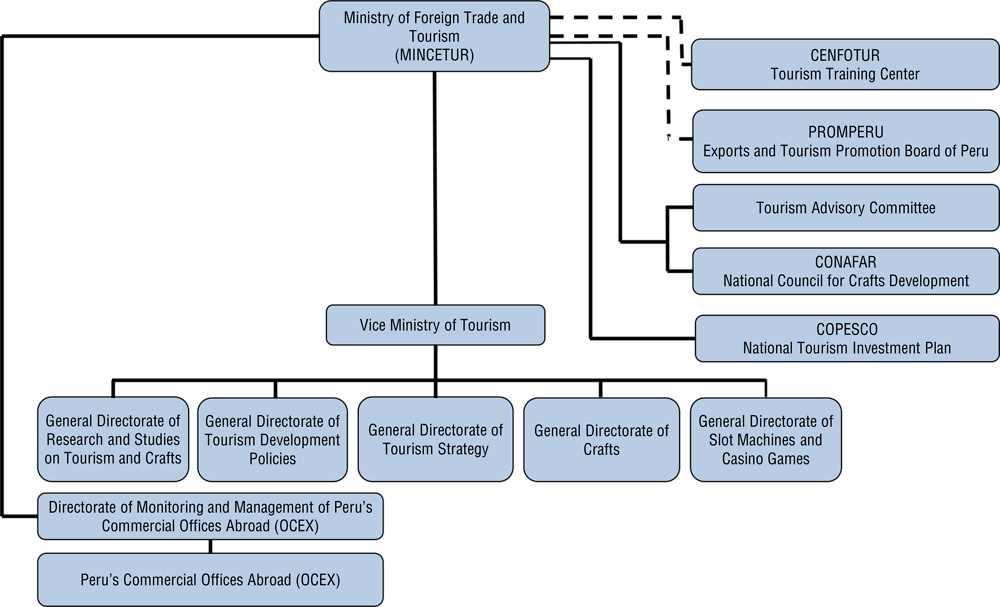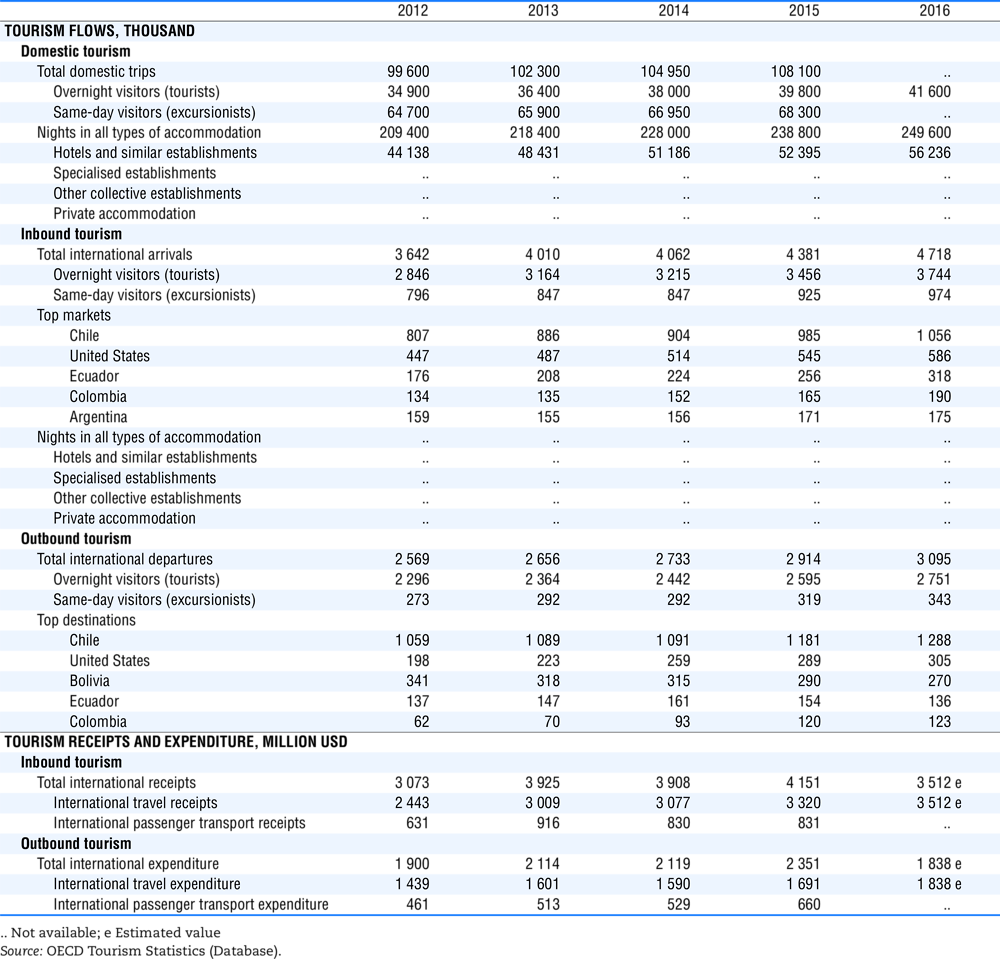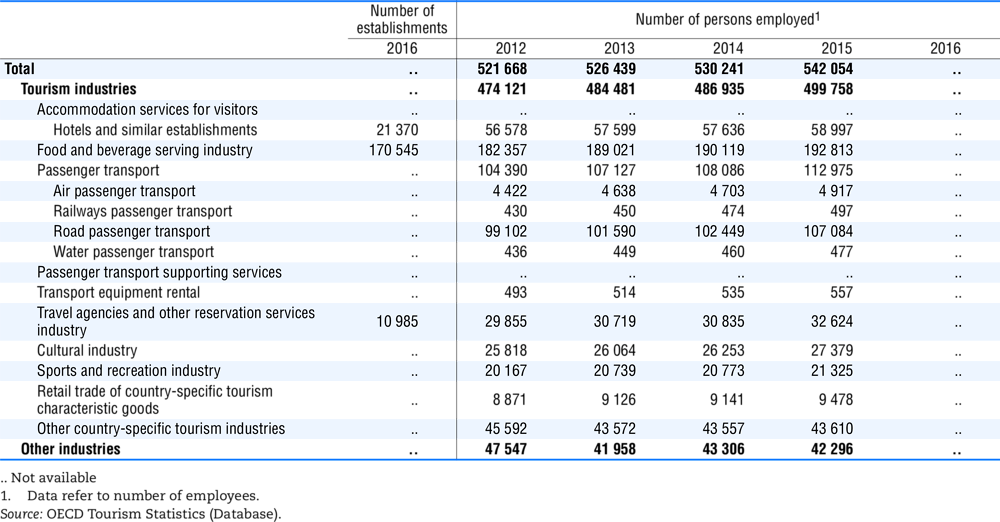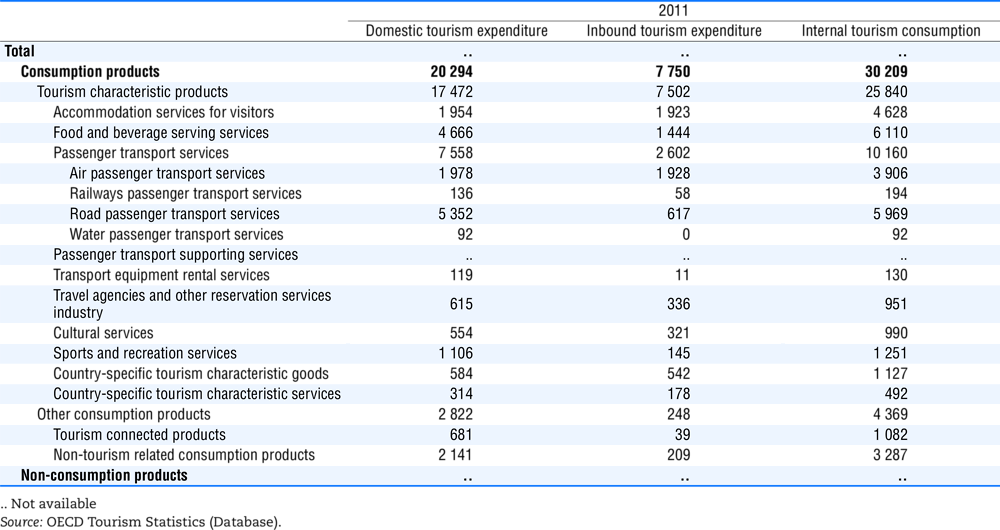Peru
Tourism in the economy
Tourism is one of the main economic activities in Peru. It is recognised as an engine for economic, social and environmental development. It is the third most important source of foreign exchange earnings, after mining and agriculture, and it represents the principal source of services exports.
Tourism Gross Domestic Product represents 3.9% of Peru’s GDP, increasing to 6.9% if domestic tourism is included. In 2016, tourism supported more than 1.3 million jobs, directly and indirectly.
International arrivals in Peru have seen significant and steady growth in the ten year period to 2016, when the figure reached 3.7 million.
The highest proportion of arrivals comes from Chile, which accounts for over 25% of international visitors. The second most significant market source is the United States, followed by Ecuador. Japan is an important generator of visits from Asia.
Domestic tourism in Peru generated over 42 million trips between cities and departments in 2016. The average length of stay of domestic holiday trips is 5 nights, generating an average spend of USD 466 per person.
Tourism governance and funding
The Ministry of Foreign Trade and Tourism (MINCETUR) is the lead authority for the sector and it defines, directs, executes, coordinates and supervises the country’s foreign trade and tourism policy, in line with the general State policy.
The Ministry of Foreign Trade and Tourism has two Vice Ministries, one of them is the Vice Ministry of Tourism which has five directorates. One of these is the Directorate of Tourism Development Policies, which is the responsible body for policy implementation, including supervising compliance and formulating actions concerning the quality of tourism services, environmental management in the sector, travel facilitation, tourist protection and promoting tourism awareness in the country. The other directorates cover strategy, research, crafts and casinos/gaming.
Moreover, there are two specialist advisory bodies comprising six to twelve members, namely: The Tourism Advisory Committee and the National Council for Handicraft Development (CONAFAR).
In all sectors of Peru, including tourism, the General Government establishes coordination mechanisms with regional governments, local governments and other entities, as required or appropriate to the nature of each policy.
The public sector budget of the tourism sector for 2017 was PEN 332.9 million, distributed as follows: PEN 85.2 million for the Vice Ministry of Tourism of MINCETUR; PEN 24.2 million for the Tourism Training Centre (CENFOTUR); PEN 134.8 million for the Peru Exports and Tourism Promotion Board (PROMPERU), and PEN 88.7 million for the COPESCO National Plan, MINCETUR’s executing unit in charge of investment tourism projects of national interest.

Source: OECD, adapted from the Ministry of Foreign Trade and Tourism, 2018.
Tourism policies and programmes
Tourism in Peru is facing a range of challenges, which in part, stem from a growing middle class in emerging markets and changing attitudes towards travel. This requires improved infrastructure and travel facilitation, while also ensuring the safety of tourists.
A specific challenge is the need to develop occupational standards for workers in the tourism sector, in order to improve competitiveness and boost job creation and economic impact. Other issues include the mitigation of negative impacts on the environment and local communities.
The main policy instrument is the National Strategic Plan of Tourism of Peru (PENTUR). There are also a National Plan for Tourism Quality, a National Strategic Craft Plan, and a National Artisan Register (RNA). The RNA is a tool to identify artisans, handicraft companies or artisan associations. It enables the mapping of artisans in a defined geographic space, named “Craft Conglomerates”, such as San Blas (Cusco), Quinua (Ayacucho), Lurín (Lima), and their incorporation into tourist circuits.
The National Strategic Plan of Tourism has four pillars covering:
-
The competitiveness and sustainability of tourism supply,
-
Tourist market diversification,
-
Travel facilitation,
-
Sector strengthening, tourism awareness and vocational training.
The main objectives of the tourism policy are to:
-
Incorporate continuous improvement in its processes, as a requirement for competitiveness: improving the quality of services and products and increasing tourist awareness, in harmony with the environment,
-
Strengthen ties with the regional and local economy: increasing potential for social and cultural benefit from tourism, improving the local environment, and making local destinations ideal places to live, work and enjoy,
-
Promote the development of sustainable tourism projects and activities that contribute to the development of communities,
-
Promote and implement measures that contribute to the control and prevention of environmental pollution and biodiversity conservation.
The Peruvian Government, through the Ministry of Foreign Trade and Tourism has launched an inclusive development Programme called Turismo Emprende that promotes the creation, development and consolidation of private tourism-related enterprises through activities that include aspects of conservation, sustainable resource use and economic development. This programme has an annual fund of USD 763 000 for the next four years. The main objective is to provide grants for the development of tourism ventures at the national level. The Programme finances the improvement and expansion of established businesses as well the creation of new enterprises, in the hotel, restaurant and travel sectors. For new businesses, the programme can fund up to 100% of project costs.
The Exports and Tourism Promotion Board of Peru (PROMPERU) constantly monitors the evolution of visitor demand in order to adjust tourism promotion strategies. Sustainable tourism growth policies and initiatives have been oriented to social sustainability and inclusive development. The latter include community based rural tourism, social tourism, and an initiative called Al Turista, Lo Nuestro which promotes the direct incorporation of local products (agricultural, livestock, fishery, handicrafts, etc.) in the provision of tourism services. It aims to promote tourist supplies that incorporate quality regional services and products purchased directly from local entrepreneurs into the tourism value chain (Box 1.9).



